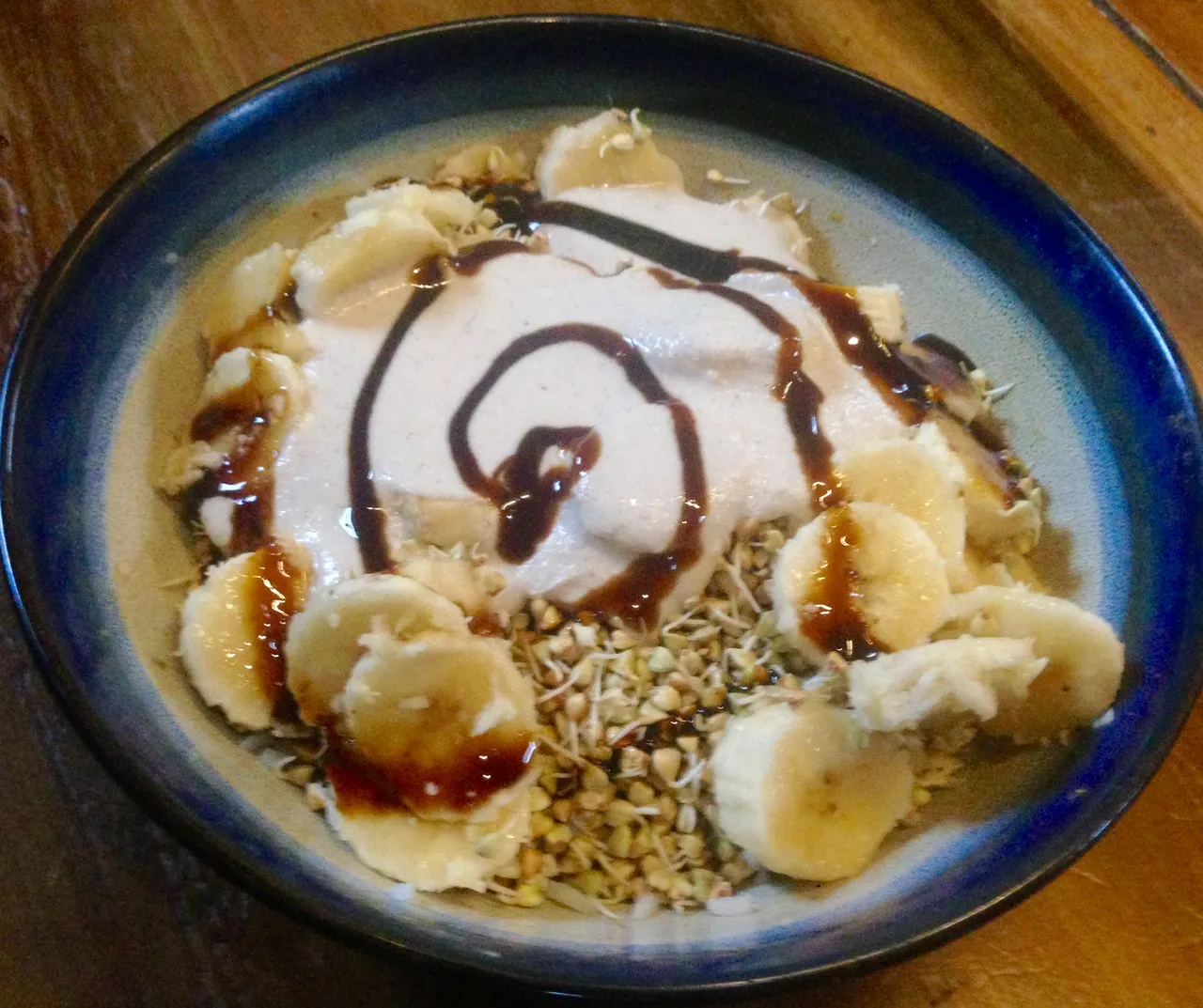
Today is the day we announce the winner of our book give away! Thanks to all of those who entered by participating in previous posts. The winner of Sprouts Live Well with Living Foods is @kiaraantonoviche!

Congrats @kiaraantonoviche, we hope you like Ini’s book!
Today we have a really fun article about how to Milk Nuts and Seeds at home (it’s udderly painless!)…. (ok that was bad. Was that bad?)
I used to think milk only came from mammary glands, but I’ve become more inclusive since my youth. Plant based mylks (yes, with a Y) have hit the mainstream as awareness of health, food allergens, animal welfare and ecological implications increases. Most commercial products are poor imitations of the real deal though. You can produce your own gourmet mylk at home, no barnyard needed.
I got into plant mylks years ago seeking vibrant and nourishing dairy substitutes to the unhealthy (to say the least) industrial dairy system in North America. Just as an aside, I do believe that appropriately scaled rotational grazing systems where pastures are managed and animals are well treated and kept hygienically is a sound ecological option for dairy production in certain locales and we love Raw Milk from local organic dairy farmers. But I digress…

(Menu Wren created for a Raw Juice Bar in Taos, NM and Ini created the recipe!)
Plant based mylk production may have its’ origins in Ancient Egypt where the underground tubers of chufa or tiger nut (Cyperus esculentus) were used to make a creamy beverage. Perhaps it was the indigenous meso-americans who made horchata with chufa and later included almonds that were introduced by the Spanish. Wherever it originated, there’s a plethora of options today. You can enjoy a wide range of mylk products easily at home by producing your own.
The abridged version
1. Soak seeds or nuts
2. Drain and rinse
3. Blend
4. Strain (optional)
A brief note on Seeds and Nuts.
Get your hands on raw shelled seeds or nuts. Make sure they’re fresh as most oxidize quickly outside of refrigeration (ever eaten a rancid nut? YUCK!). Ask your supplier about freshness and storage and give preference to organic production. I’ve shied away from almonds because the massive monoculture plantings (and requisite honey bee mismanagement) and forced pasteurization in the USA don’t make me happy. I’ve always loved domestically grown sunflower seeds as they are tasty and economical option. If you’re suspect about quality, you can always presoak the seeds in a little H2O2 (hydrogen peroxide) as a safe sterilizing agent.
The detailed version

1. Soak your seeds or nuts.
Use the best water you have access to (chlorine IS NOT pro life). In general the bigger the seed or nut, the longer the soak time. Consult this chart
2. Drain and rinse thoroughly.
You’ll notice that the water has changed colors because the anti-nutrients like enzymes inhibitors and phytic acid are leached away from seeds and nuts when soaked.

3. Mix seeds or nuts with water and blend.
The ratio depends how thick you want the mylk. 1:4 is thin mylk 1:2 is heavy cream, so play around with what you prefer. If you won’t be straining, now would be a time to add flavorings, spices and/or sweetener. Blend until creamy.
4. I don’t strain most of my mylks, as I’d rather just eat it all together.
If you’re into it, straining can create a smoother texture for drinks or to add to cereal. The best option for this is a Victoos brand bag built with strong seams and a fine mesh. It allows you the squeeze every last drop out, leaving dry pulp. This can be used in baking or dehydrated goodies as well.
You’ll soon realize how sad the store bought versions of nut mylks are. I looked at the label on a commercial “almond beverage” and I found there to be no protein, wtf?! Where did it go?
DIYers always do it better.
This is just the basics of how to milk seeds and nuts. My book on sprouting has even more details and future ideas. I will be going through some the 40 recipes in my book in the New Year so stay tuned for more ideas on incorporating sprouted food into your diet.